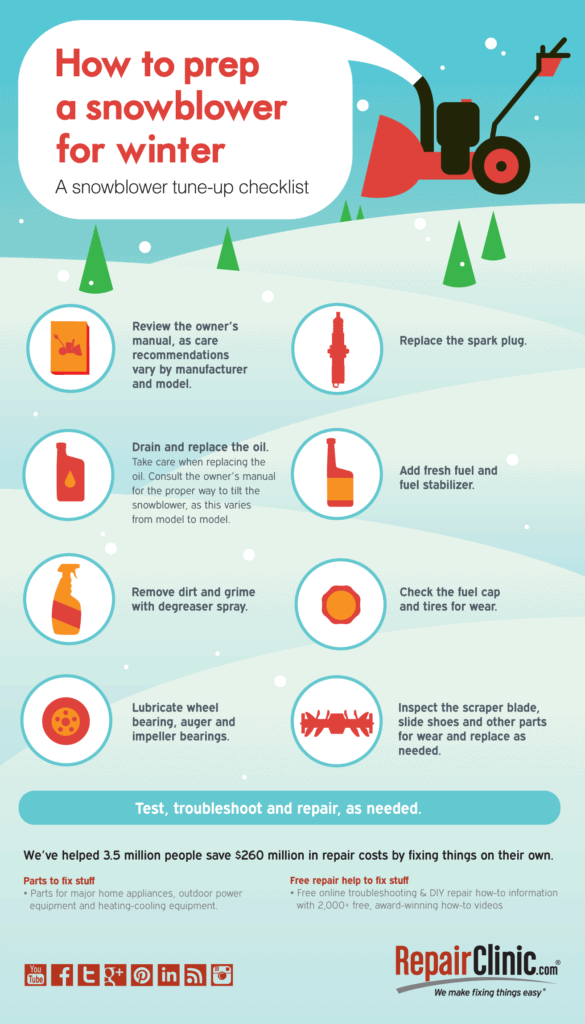The best way to tune up a snowblower before winter is to follow a detailed maintenance checklist that includes inspecting key parts, replacing fluids, and ensuring safe operation. Preparing your snowblower early prevents mid-season breakdowns, saves money on repairs, and helps the machine start smoothly during the first heavy snowfall. This guide from RepairClinic.com explains each essential step, from changing the oil and spark plug to checking the scraper blade and lubricating bearings, so you can keep your snowblower running efficiently and safely all season long.
1. Review the owner’s manual.
“Recommendations for snowblower care vary by manufacturer and by model,” Linderman said. “Review the owner’s manual at the start of every season to avoid expensive mistakes.”
2. Replace the spark plug.
3. Drain and replace the oil.
Take care when replacing the oil. Consult the owner’s manual for the proper way to tilt the snowblower, as this varies from model to model. Tilting the snowblower the wrong way in this step can cause expensive damage to key components. Remember that used oil should be recycled; this can be done at many auto part suppliers or small engine repair shops.
4. Add fresh fuel and fuel stabilizer.
“Fuel stabilizer is important,” Linderman said. “It slows the development of damaging buildup in the carburetor.”
5. Remove dirt and grime.
A degreaser spray will remove grease and dirty from grimy areas. Allow the degreaser to sit for 10-15 minutes before wiping with a clean cloth.
6. Check the fuel cap and tires for wear.
Fuel caps have small vent holes to allow air into the fuel tank. Replace the fuel cap if its air vent holes are blocked by buildup or debris. Cover or close the fuel cap vents in the off-season. Check the tires for wear and replace as needed. A tire pressure gauge should be used to check the air pressure in pneumatic tires.
7. Lubricate bearings.
Lubricate wheel bearings, auger bearings and impeller bearings.
8. Inspect the scraper blade, slide shoes and other parts for wear and replace as needed.
Take the time thoroughly inspect key components such as the scraper blade and slide shoes (a.k.a. skid shoes) for wear. “These parts have the important job of protecting the housing from damage,” said Linderman. “Replace these parts if they have worn dangerously thin or are damaged beyond repair.”
9. Test, troubleshoot and repair, as needed.
If a snowblower has performance issues such as starting and then stopping or malfunctioning augers, take the time to troubleshoot and repair now.
“Even minor changes in performance can indicate larger problems in a snowblower,” Linderman said. “Troubleshoot and make repairs to avoid downtime and costlier repairs later in the season.”
Related information
Snowblower Repair Help
Snowblower Replacement Parts and Maintenance Products
Snowblower Maintenance Tips
